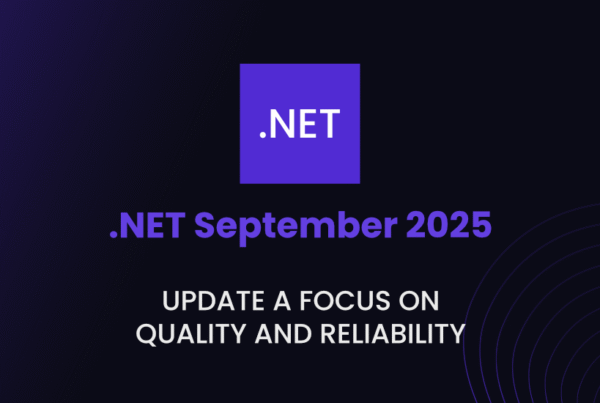In this article, we will explore five essential techniques for optimizing Entity Framework (EF) queries in .Net Core. By following these best practices, you can improve the performance and efficiency of your database operations, leading to a smoother and faster application.
1. Getting Only the Fields You Need
When fetching data from the database, it is crucial to retrieve only the specific fields required for a particular operation. By selecting only the necessary fields, you can optimize data retrieval and improve the performance of your application. Let’s look at an example:
var employeeList = context.Employees
.Select(e => new EmployeeDto
{
Name = e.Name,
Email = e.Email
})
.ToList();In this code snippet, we are selecting only the Name and Email fields from the Employees table, avoiding unnecessary data retrieval. This approach offers several benefits:
- Reduced data transfer
- Lower memory usage
- Improved query performance
- Decreased entity tracking overhead
By fetching only the fields you need, you can optimize your EF queries and enhance the overall performance of your application.
2. Avoiding N+1 Queries
One of the common performance pitfalls in EF Core is the N+1 query problem, where additional queries are executed for each object in a collection, leading to performance issues, especially with large datasets. Let’s dive deeper into how you can tackle and resolve this problem effectively.
Understanding the N+1 Query Issue
In the context of EF Core, the N+1 query problem occurs when a query is made to retrieve a set of objects, and additional queries are executed for each object to fetch related data. This results in a considerable number of database calls, impacting the performance of the application.
Example Scenario:
Consider a scenario where you have a Blog entity related to Post entities. When fetching all blogs and their posts:
var blogs = context.Blogs.ToList();
foreach (var blog in blogs)
{
foreach (var post in blog.Posts)
{
Console.WriteLine(post.Title);
}
}In this scenario, each blog triggers a separate query to fetch its posts, leading to the N+1 issue.
Resolving N+1 Queries with Eager Loading
To address the N+1 query problem, you can use eager loading with the Include method to load related entities upfront in a single query:
var blogs = context.Blogs.Include(b => b.Posts).ToList();
foreach (var blog in blogs)
{
foreach (var post in blog.Posts)
{
Console.WriteLine(post.Title);
}
}Benefits of Resolving N+1 Queries:
- Improved Performance: By fetching related entities in a single query, you reduce the number of database calls, enhancing performance.
- Simplified Code Logic: The code becomes more straightforward and easier to maintain, as related entities are loaded efficiently.
By proactively addressing and resolving N+1 queries using eager loading techniques, you can optimize the performance of your EF Core queries and ensure a smoother operation of your application.
3. Leveraging .AsNoTracking()
In Entity Framework (EF) Core, the AsNoTracking method is a valuable optimization technique that can enhance the performance of your database queries, especially in scenarios where you solely require read-only access to data. Let’s delve deeper into how AsNoTracking works and its benefits in optimizing EF Core queries.
Understanding the AsNoTracking Method
The AsNoTracking method in EF Core is used to retrieve entities from the database without enabling change tracking. This means that the entities fetched using AsNoTracking are not tracked for modifications, making it suitable for scenarios where you do not intend to update or delete the entities.
Example Usage of AsNoTracking:
Consider a scenario where you need to fetch a list of products for display purposes only:
var products = context.Products.AsNoTracking().ToList();Benefits of Using AsNoTracking:
- Performance Improvement: By disabling change tracking,
AsNoTrackingcan lead to faster query execution and reduced overhead, especially when dealing with large datasets. - Memory Efficiency: Since the entities are not tracked for changes, less memory is consumed, resulting in a more efficient use of resources.
Considerations When Using AsNoTracking:
- Read-only Operations:
AsNoTrackingis ideal for scenarios where you only need to read data and do not intend to modify the entities. - Not Suitable for Updates: Avoid using
AsNoTrackingfor operations that involve updating or deleting entities, as change tracking is necessary for such modifications.
By leveraging the AsNoTracking method judiciously in your EF Core queries, you can enhance the performance and efficiency of your application, especially in read-heavy scenarios.
4. Preventing Cartesian Explosion
A cartesian explosion occurs when a query unintentionally generates a large number of records due to improper joins. This can severely impact query performance and efficiency. Let’s look at an example of how to avoid a cartesian explosion:
var query = from a in context.Authors
join b in context.Books on a.AuthorId equals b.AuthorId
select new { a.Name, b.Title };
var results = query.ToList();By using proper join conditions in your queries, you can prevent cartesian explosions and ensure efficient data retrieval. The benefits include:
- Performance optimization
- Resource efficiency
- Accurate query results
By writing optimized queries that avoid cartesian explosions, you can enhance the performance of your EF Core application.
5. Utilizing AsSplitQuery()
In Entity Framework (EF) Core 5.0 and later versions, the AsSplitQuery method provides a way to optimize queries that retrieve multiple related entities by splitting them into separate SQL queries. This technique can offer performance benefits, especially in scenarios involving complex queries or dealing with large datasets. Let’s explore how to effectively utilize AsSplitQuery in your EF Core application.
Understanding AsSplitQuery Method
The AsSplitQuery method in EF Core allows you to split queries that fetch related entities into separate SQL queries. This can be advantageous when a single query may result in an inefficient execution plan or when dealing with a large amount of data.
Example Usage of AsSplitQuery
Let’s consider a scenario where you want to retrieve authors along with their books using AsSplitQuery:
var authors = context.Authors
.Include(a => a.Books)
.AsSplitQuery()
.ToList();In this example, the call to AsSplitQuery signals EF Core to split the query into separate SQL queries to improve performance.
Benefits of Using AsSplitQuery
- Performance Improvement: By executing separate SQL queries,
AsSplitQuerycan enhance the overall performance of queries, especially for complex relationships or large datasets. - Reduced Memory Overhead: Splitting queries can help avoid memory issues that may arise from loading large amounts of data in a single query.
- Flexibility in Query Optimization:
AsSplitQueryoffers an alternative approach to fetching related entities, providing flexibility in optimizing queries based on specific requirements.
Considerations When Using AsSplitQuery
- Increased Database Round-Trips: Splitting queries may lead to more database round-trips, so it’s essential to weigh the performance gains against the additional network overhead.
- Ideal for Specific Scenarios: While
AsSplitQuerycan be beneficial in certain situations, it may not be necessary for every query. Consider using it selectively based on the complexity and nature of your data retrieval needs.
By leveraging the AsSplitQuery method thoughtfully in your EF Core queries, you can potentially boost the performance and efficiency of your application, especially when dealing with intricate relationships and sizable datasets.
In conclusion, by following these five techniques for optimizing EF queries in .Net Core, you can improve the performance, efficiency, and scalability of your application. Remember to write efficient queries from the beginning to avoid performance issues in the future. Optimizing your EF Core queries is essential for maintaining a robust and high-performing application.




